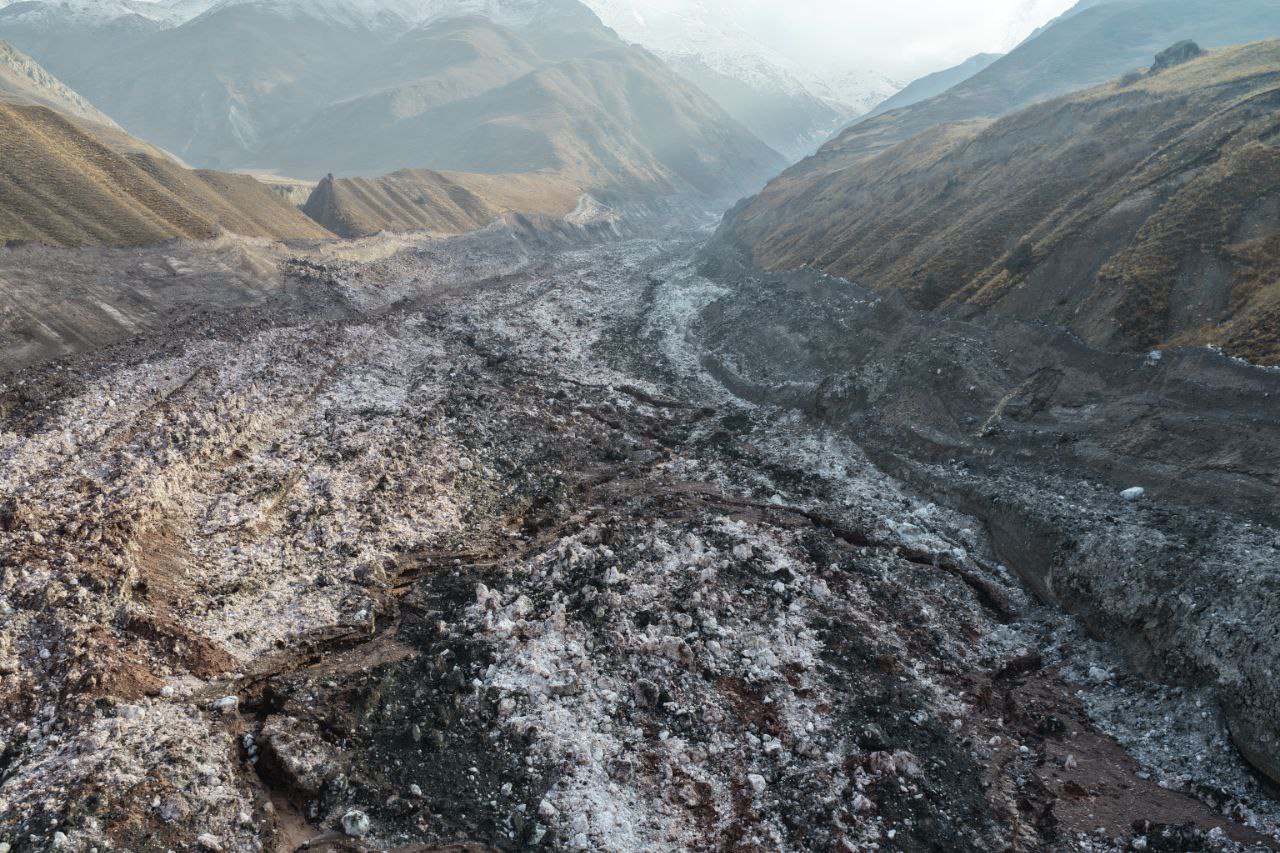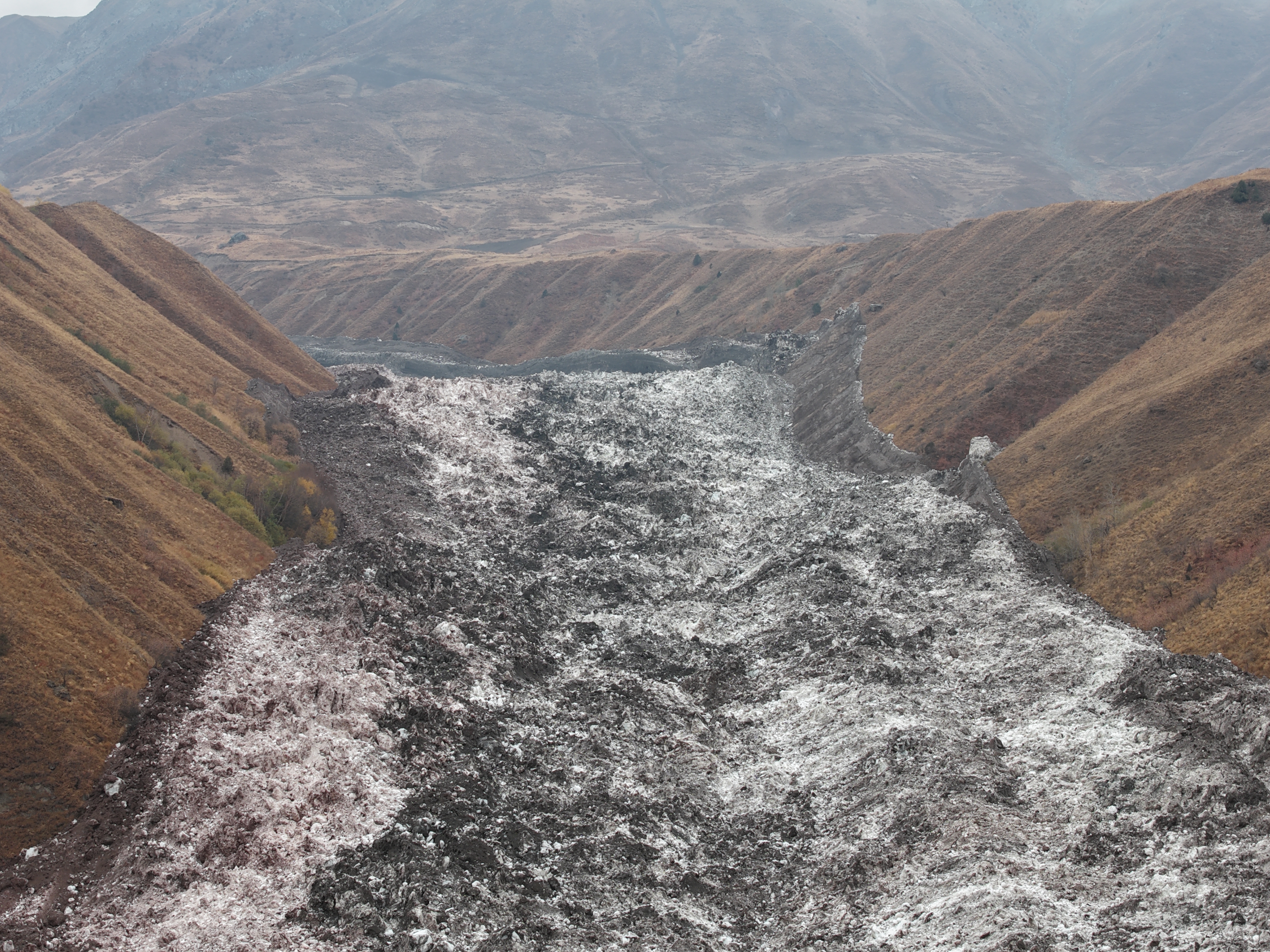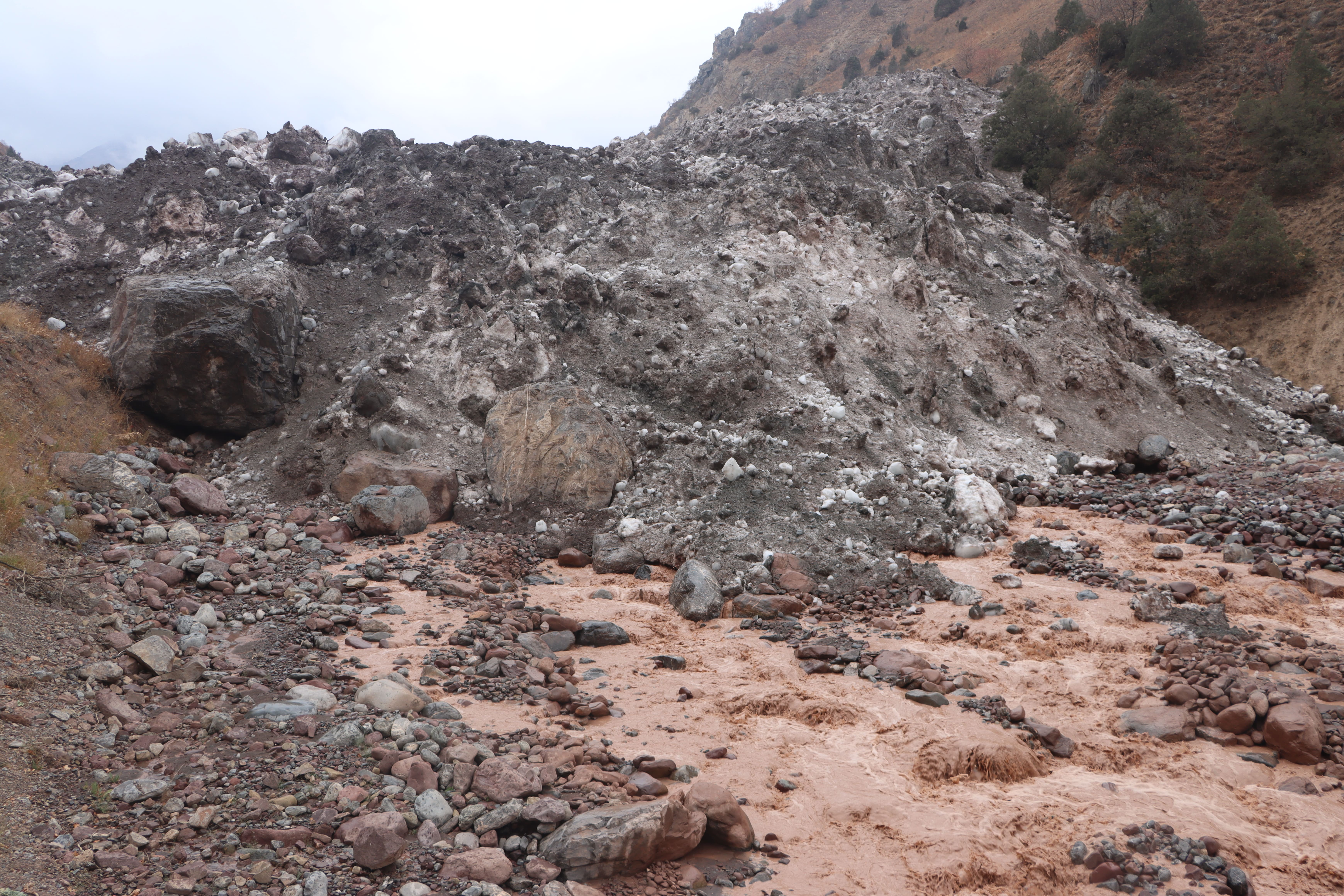On 25 October 2025, at around 11:00 a.m., a large ice mass collapsed from the Dehdal Glacier (formerly known as Dedal), located on the northern slopes of the Peter the First Range, near the village of Safedobi in Tajikabad District.
According to the Committee for Emergency Situations and Civil Defence under the Government of the Republic of Tajikistan, a section of the glacier, approximately 2 km long, 25 m high, and 150–200 m wide, broke off and slid down the valley. By 14:00, the situation had stabilized, and no casualties or serious damage were reported.
This is the second collapse of the Dehdal Glacier in recent months. Kamoliddin Nazirzoda, Deputy Head of the Glaciology Centre of the Agency for Hydrometeorology of Tajikistan, explained:
“The activity of the Dehdal Glacier this year can be described as abnormal — no one expected a surge. This glacier is listed among the representative glaciers, and our Centre assessed its condition in 2020 and 2024. According to those studies, there were no signs of an imminent surge; we expected it in 25–30 years. However, this year two surges occurred in a row: the first on 18–19 September, when the glacier advanced more than 4 km, and the second at the end of October, when the ice mass moved another 5 km down the valley. Satellite images show that the activity had already started in early September.”
About the glacier
The Dehdal Glacier originates at an altitude of 4,600 metres above sea level and is a surge-type (or pulsating) glacier, whose movement occurs roughly every 40–45 years, according to the Glaciology Centre of the Agency for Hydrometeorology. Previous active phases of Dehdal were recorded in 1902, 1922, 1974, and 2016.
According to Kamoliddin Nazirzoda, the glacier’s dynamics are directly linked to climatic conditions — namely, the amount of precipitation and snow accumulation in its feeding area.
“After analyzing meteorological data from the past five years, we found that from late spring to early autumn this year, there was almost no precipitation, while temperatures remained high. This led to the degradation of the glacier’s structure. Another contributing factor was seismic activity. Several earthquakes were recorded in the area this year, which could also have influenced the movement of the ice mass.”
Outlook
The glacier’s surface remains active. The residual ice mass continues to move slowly, but there is a risk of another surge, which could damage the bridge on the Dushanbe–Vakhdat–Lakhsh highway leading to the Kyrgyz Republic, as well as affect farmland in the village of Gulrez.
According to the Committee for Emergency Situations, work is already underway in the valley to reinforce riverbanks and protect the bridge and nearby areas in case of new surges or water outbursts.
“We continue monitoring the glacier. In the coming days, our specialists will travel to the site to assess the likelihood of another surge,” added Kamoliddin Nazirzoda.
Why it matters
Such phenomena highlight the need for continuous glacier monitoring and the development of automatic, remote observation systems — one of the key components of the GEF–UNDP–UNESCO project “Strengthening the resilience of Central Asian countries by enabling regional cooperation to assess glacio-nival systems to develop integrated methods for sustainable development and adaptation to climate change” (Cryosphere Project).
At the same time, the high vulnerability of local communities underscores the importance of disaster risk reduction and early warning efforts, which are being carried out by the GLOFCA project in its pilot area near the Said Nasafi (Baralmos) Glacier.

 Go Back
Go Back

